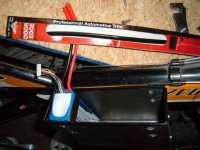Alan B
100 GW
Three Bears Loop Ride

http://www.mapmyride.com/s/routes/view/bike-ride-map/california/martinez/3363949
18.6 miles, 1093 feet vertical gain, two climbs over 3% (both under 4%) when done clockwise. Looks from the profile like two steeper downhills, one is pretty long, looks like 10% for a mile. Would be quite a climb to do the course in reverse.
Route: Castro Ranch Road, Alhambra Valley Rd, Bear Creek Rd, San Pablo Dam Road. Circles along Briones and San Pablo Reservoirs. Not much traffic except on San Pablo Dam road, which has wide bike friendly margins along most of the route. Some pretty views and good photo ops on this route. There is a BART station in Orinda not too far from the loop.
This route is not far from my house, a mile or so, and is perhaps somewhat equivalent to my inbound work commute which has more vertical but is not quite as far. I have not ridden this route yet, though I've been on all these roads at some time or another. If things work out I'll try it by ebike soon.

http://www.mapmyride.com/s/routes/view/bike-ride-map/california/martinez/3363949
18.6 miles, 1093 feet vertical gain, two climbs over 3% (both under 4%) when done clockwise. Looks from the profile like two steeper downhills, one is pretty long, looks like 10% for a mile. Would be quite a climb to do the course in reverse.
Route: Castro Ranch Road, Alhambra Valley Rd, Bear Creek Rd, San Pablo Dam Road. Circles along Briones and San Pablo Reservoirs. Not much traffic except on San Pablo Dam road, which has wide bike friendly margins along most of the route. Some pretty views and good photo ops on this route. There is a BART station in Orinda not too far from the loop.
This route is not far from my house, a mile or so, and is perhaps somewhat equivalent to my inbound work commute which has more vertical but is not quite as far. I have not ridden this route yet, though I've been on all these roads at some time or another. If things work out I'll try it by ebike soon.




